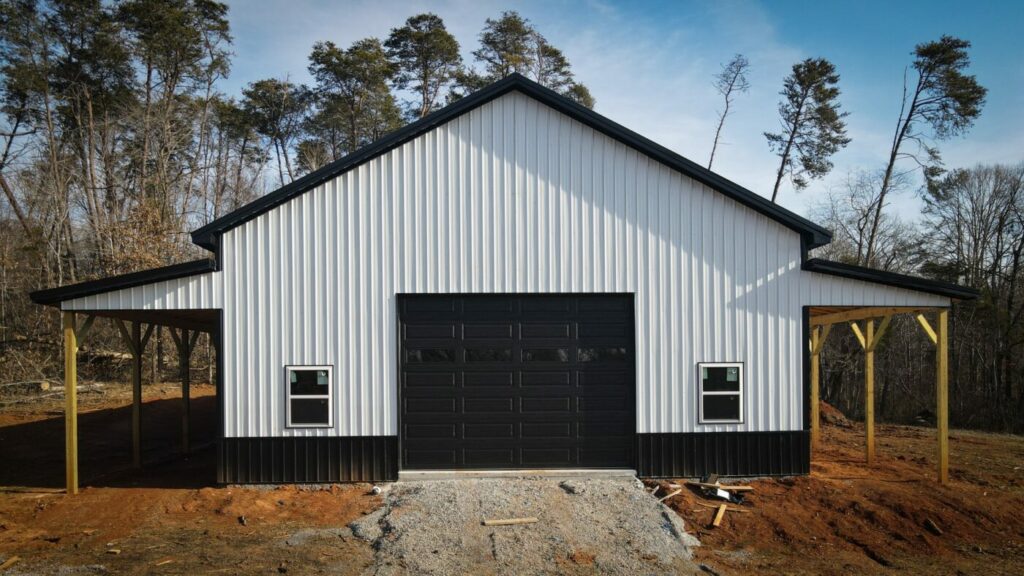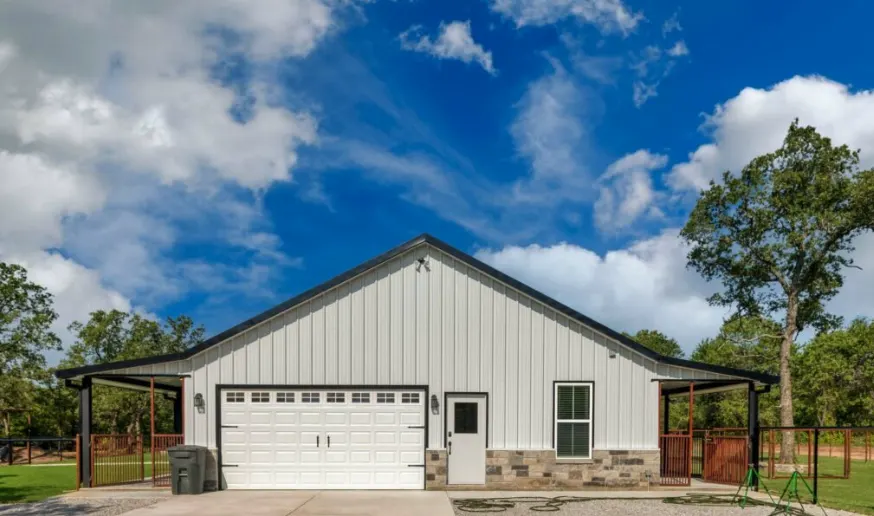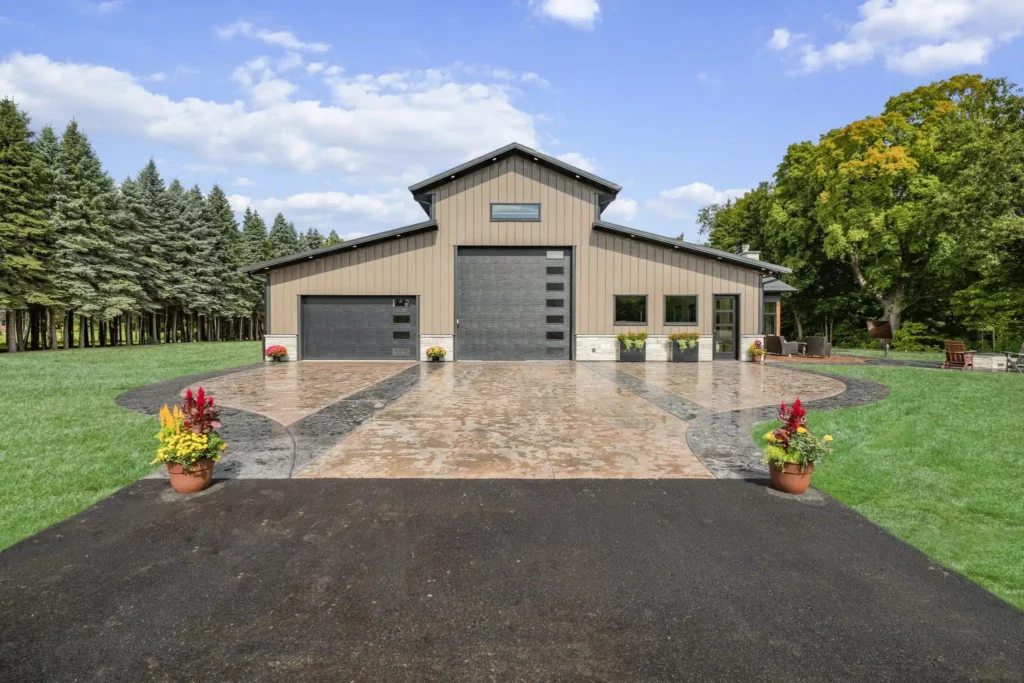Thinking of turning a pole barn into a home? It’s a unique, budget-friendly way to create a stylish and spacious living space.
From planning to finishing touches, this guide walks you through the conversion process, key benefits, and must-know considerations to make your dream barn home a reality.
Can you turn a pole barn into a house?
Yes, you can turn a pole barn into a house! With proper insulation, plumbing, electrical work, and finishes, pole barns can be transformed into comfortable living spaces.
Key Takeaways
- A pole barn can be turned into a home with proper planning and modifications.
- The cost of converting a pole barn will vary based on size, materials, and the extent of the renovation.
- Converting a pole barn offers cost savings, but zoning regulations, insulation, and electrical work must be addressed.
What is a Pole Barn?

Before considering converting a pole barn into a house, it’s important to understand what a pole barn is.
A pole barn is a building with a frame supported by large posts or poles buried in the ground, rather than by a traditional foundation.
This construction method allows for large, open spaces inside without the need for load-bearing walls.Pole barns are often used as storage facilities, agricultural buildings, or garages due to their simplicity and cost-effectiveness.
However, their structure can be modified and turned into a livable space with the right changes.
Is it Feasible to Convert a Pole Barn into a House?
Yes, converting a pole barn into a house is feasible, but it requires careful planning.
While pole barns are designed for different purposes than residential homes, their large open spaces, sturdy frame, and affordability make them a great candidate for renovation into a comfortable home.
The conversion process involves several important factors, including insulation, electrical systems, plumbing, interior finishes, and compliance with local zoning and building regulations.
Converting a pole barn into a home is often a more affordable option compared to building a new house from scratch, especially if you already own the land and the structure.
Key Steps to Convert a Pole Barn into a House

Converting a pole barn into a home involves several essential steps. Here’s a breakdown of the process:
Check Zoning and Permits
Before starting the conversion, you need to ensure that your pole barn is located in an area where residential use is permitted.
Zoning laws vary by location, so it’s important to check with local authorities before you move forward to convert a pole barn into a house and ensure the project is legally allowed.
You may also need to apply for various permits, such as building, electrical, and plumbing permits, depending on your renovation plans.
Assess the Structure’s Integrity
While pole barns are sturdy, not all pole barns are suitable for conversion. Have a professional inspect the existing structure to ensure that it is sound and capable of supporting a living space.
This will include checking the foundation, roof, and framing for stability. You may need to reinforce certain areas to meet residential building standards.
Install Insulation
Pole barns are not designed for temperature regulation, so insulation is one of the most critical steps in the conversion process.
You’ll need to install proper insulation in the walls, roof, and floor to ensure that your new home stays warm in winter and cool in summer.
There are several insulation options to consider, including spray foam insulation, fiberglass batt insulation, or blown-in cellulose.
Your decision will ultimately come down to budget, climate, and the unique needs of your home. Before moving forward, it helps to check the cost to build a pole barn house so you can plan with confidence.
Install Electrical and Plumbing Systems
One of the most significant steps in converting a pole barn into a home is installing electrical wiring and plumbing systems.
Pole barns are not designed with residential utilities in mind, so you will need to hire a licensed electrician and plumber to run wires, install outlets, and set up pipes for water, drainage, and gas lines.
Ensure that your electrical system is up to code and can handle the power needs of a modern home.
Additionally, you’ll need to connect the plumbing to the local water supply and sewer system (or install a septic system if you’re in a rural area).
Create Interior Walls and Flooring
Pole barns often have large open spaces, which means you’ll need to create interior walls to separate rooms and give the space structure.
This will likely involve building partition walls, adding windows and doors, and laying down flooring.
When planning your interior, think about the layout that best suits your lifestyle. You might prefer a traditional setup with bedrooms, a kitchen, and a bathroom, or lean toward an open-concept design with a loft or spacious central area. Your choices here can also influence the overall cost to convert a pole barn into a house, so balancing style with practicality is key.
Finish the Exterior
The exterior of the pole barn may need some work to make it look more like a home. This could involve adding siding, painting, and installing windows and a proper entrance.
You may also want to add a porch, deck, or landscaping to boost the curb appeal of your finished home, which can influence the overall convert a pole barn into a house cost.
Frequently Asked Questions
1. Is it cheaper to convert a pole barn than to build a traditional home?
It can be cheaper upfront, but costs vary based on the amount of structural work and code requirements in your area.
2. Will a barn home appraise like a regular house?
That depends on finishes, location, and the market. A well-finished barn home can appraise competitively if built to code.
3. Can I do the conversion myself?
Parts of it, yes—like framing and finishes. But plumbing, electrical, and structural work should be done or overseen by professionals.
Conclusion
Converting a pole barn into a house can be a cost-effective and creative way to build your dream home.
With careful planning, proper materials, and professional expertise, you can turn your pole barn into a beautiful, functional living space.
From energy efficiency and long-term savings to flexible layouts and faster builds, there are plenty of benefits to consider. Understanding the pole barn house conversion cost is often the first step in seeing why this option makes so much sense.
If you’re interested in converting a pole barn into a home, consult with a professional to assess the feasibility of the project and help you navigate the necessary steps.
With the right planning, a pole barn can become the ideal home for you and your family.

